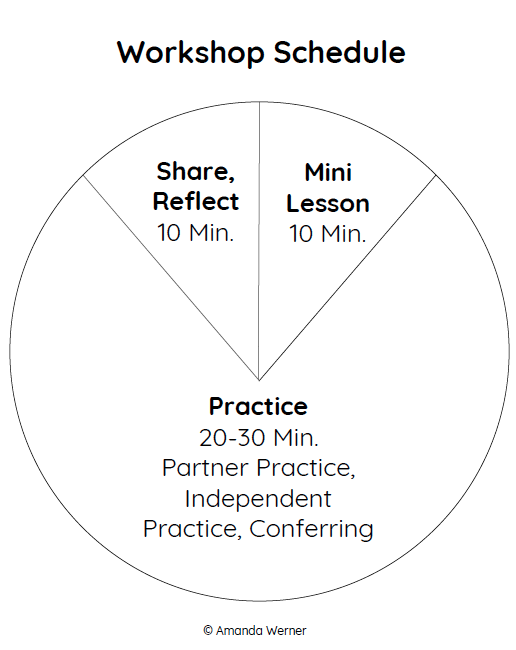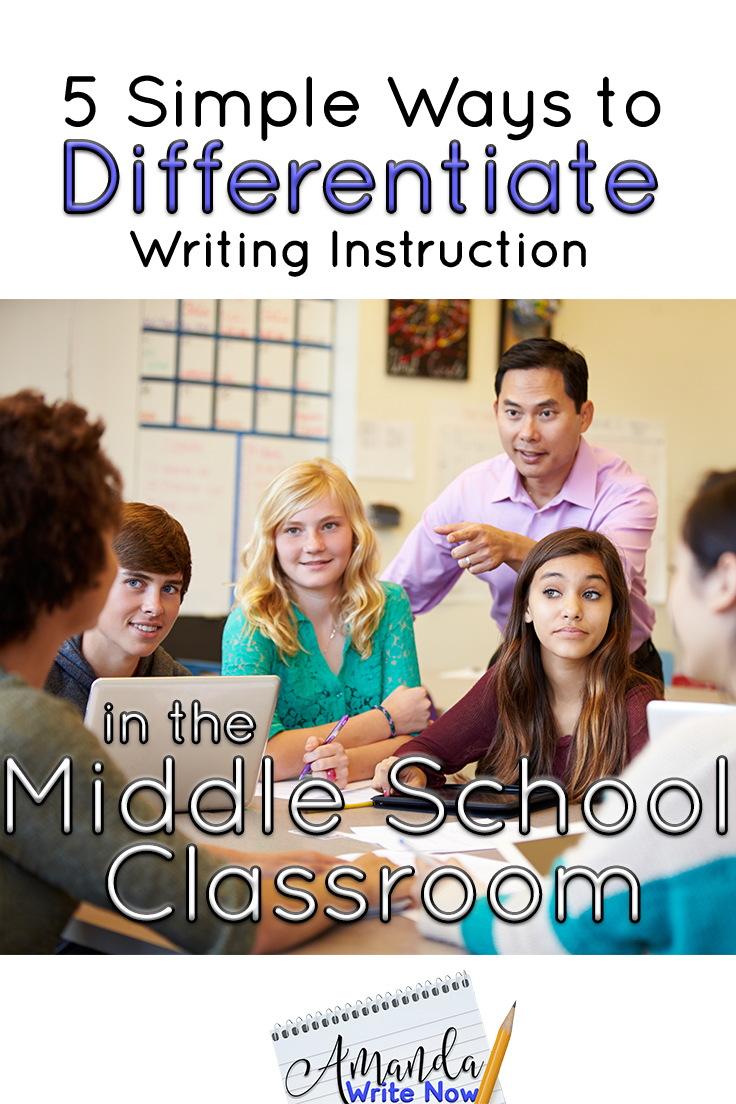
Teaching writing is tough and differentiating writing instruction is tougher! Student writers have so many varying needs. What do you do when Steven can crank out a well organized, thoughtful literary essay in twenty minutes and John can barely write a paragraph? What do you do when Cindy says she is confused about how to develop a claim and Sarah says she needs help organizing her essay?
This situation can be super overwhelming when 30 plus students are demanding your help or maybe five students are and the other thirty are just displaying avoidance behaviors such as distracting others or maybe reading when they should be writing?
In this article I will give you some simple strategies to remediate these issues and meet the needs of ALL your students!
1. Teach Behavior Mini Lessons
Many secondary teachers believe that writing workshop is for elementary classrooms or that they just don’t have enough time to make writing workshop happen. Well, I’m here to tell you it can be done and you should try it if you really want to differentiate writing instruction.
Why? The reason I love writing workshop so much is because you can teach students in the moment, meaning you can provide exactly what they need while they work. This is exactly what differentiation is!

How? Do three things:
1. Follow the schedule to the left.
2. Make sure to keep your mini lessons short (ten minutes max).
3. Make sure to work in writing behavior mini lessons as well as writing skill lessons.
You must teach writing behavior mini lessons because students need to exhibit tremendous independence during “practice” time. They need to be independent so that you can do the very best job conferring with individuals and groups and so that you can differentiate your instruction. Here are some essential behavior mini lessons to teach:
1. How do I live a writerly life?
2. What do I do when I’m done writing?
3. What do I do when I get stuck?
4. How do I get ideas to write about?
2. Have Conferences Every Day


Carl Anderson, author of How’s It Going? discusses how conferences are really just short conversations with students. It is quite simple really.
1. Approach a student and ask “How’s it going?”.
2. Allow the student to tell you what they are working on, ask probing questions if necessary.
3. Decide on ONE and only one teaching point based on what you see the student doing and hear them saying.
4. Teach the skill as simply as you can, use a mentor text to show the skill/concept in action.
5. Tell the student you want them to practice the skill then and there and you’ll be back to check up on how their doing in ten minutes or so.
6. Make a few notes using your preferred data collect form (sign up at the end of this post to receive forms already done for you).
7. Move on to the next student and repeat.
To read more about conferring click here. Show your students this video, to teach them how conferences work.
3. Design Charts Based on Needs
I create charts based on observations of students during work time and after surveying them by show of hands during mini lessons. I ask questions like, “Raise your hand if you know multiple ways to write a lead that will make the reader want to keep reading?” or “Raise your hand if you feel like your article is well organized?” or “Who can name five nonfiction text features?”. If very few students raise their hand then I know I need to make a chart. Students are usually pretty honest about what they know and don’t know. This is especially true if you’ve done an excellent job building an open, accepting classroom community. Click here for a whole lot of writing charts!
4. Use Technology Tools
There are so many techy writing tools to differentiate your writing instruction out there! I definitely urge you to let students use computers to type if they struggle with handwriting or motivation. Below you’ll find a list of some awesome websites/apps that get students excited about writing based on the need of the student…
Students who need help getting ideas:
- Story Shack
This fun app is for generating fictional story ideas. It provides: word count, genre, character type, a prop to use, a starting sentence and a a bonus assignment - Scholastic Story Starters
Students love this cool little tool. There an exorbitant number of crazy fictional stories students can write with this fun generator. This is also just a fun tool to use if you want to have a fun Friday with your students. - 30 Informational Writing Prompts
This website has lots of ideas for informational writing articles if individual students are having a hard time coming up with ideas.
Students who have handwriting issues:
- Notepad [Free]
This website allows students to type lists/drafts directly on notebook paper and then save it to their computer. - Google Docs [Free]
I love Google Docs because students can share their writing with the teacher and other students. Then, the teacher and peers can comment with feedback. - iPad Note apps [Cost Varies]
There are tons of note apps for iPad. Students LOVE using iPads and ADORE using the Apple Pencil to write notes and drafts! I obtained an iPad and Apple Pencil by writing a Donors Choose grant!
Students who think they are done and could revise:
- Hemmingway App [Free]
This is a neat app that highlights super lengthy sentences red and semi lengthy sentences yellow. Green highlights indicate passive voice. All you have to do is paste your text below the directions. - Turnitin.com [Paid]
This tool is not free. It allows teachers to assign writing tasks and to provide instant feedback with the click of a button. There are pre-designed/written comments for everything you can think of and you can add your own comments too! This tool allows students to read the feedback and revise all within the same document. - Sporkforge [Free]
This website is awesome. It analyzes word and sentence count and looks for repetitive words. if you use this tool, you’ll definitely want to teach students how it can supplement the revision process.
5. Form Partnerships
One of the best ways to advance student writing independence is by allowing students to form writing partnerships. When students have partners they seek the support of their partner before seeking support from the teacher. This frees you to conference with specific students of your choosing and to be strategic in your choices based on individual needs of students.
Many people wonder if you should choose partners or let students choose. It really depends on what you are comfortable with and what your students need. I usually allow students to choose their partner with one caveat, they must be on task or I will choose for them. I find that allowing students to choose their partner has two major benefits: students are more comfortable getting help from someone they like and they are are more motivated to be on task with their friend. Below you’ll find a couple of videos that can help you in forming writing partnership in your classroom.
Finally…
Meeting the needs of your students is challenging. The truth is it will always be challenging! If you try the five strategies I’ve mentioned here, I believe it will get easier. The more conversations you have the more confident you can be that you are doing everything you can to meet your writers’ needs and differentiate writing instruction.

0 Comments